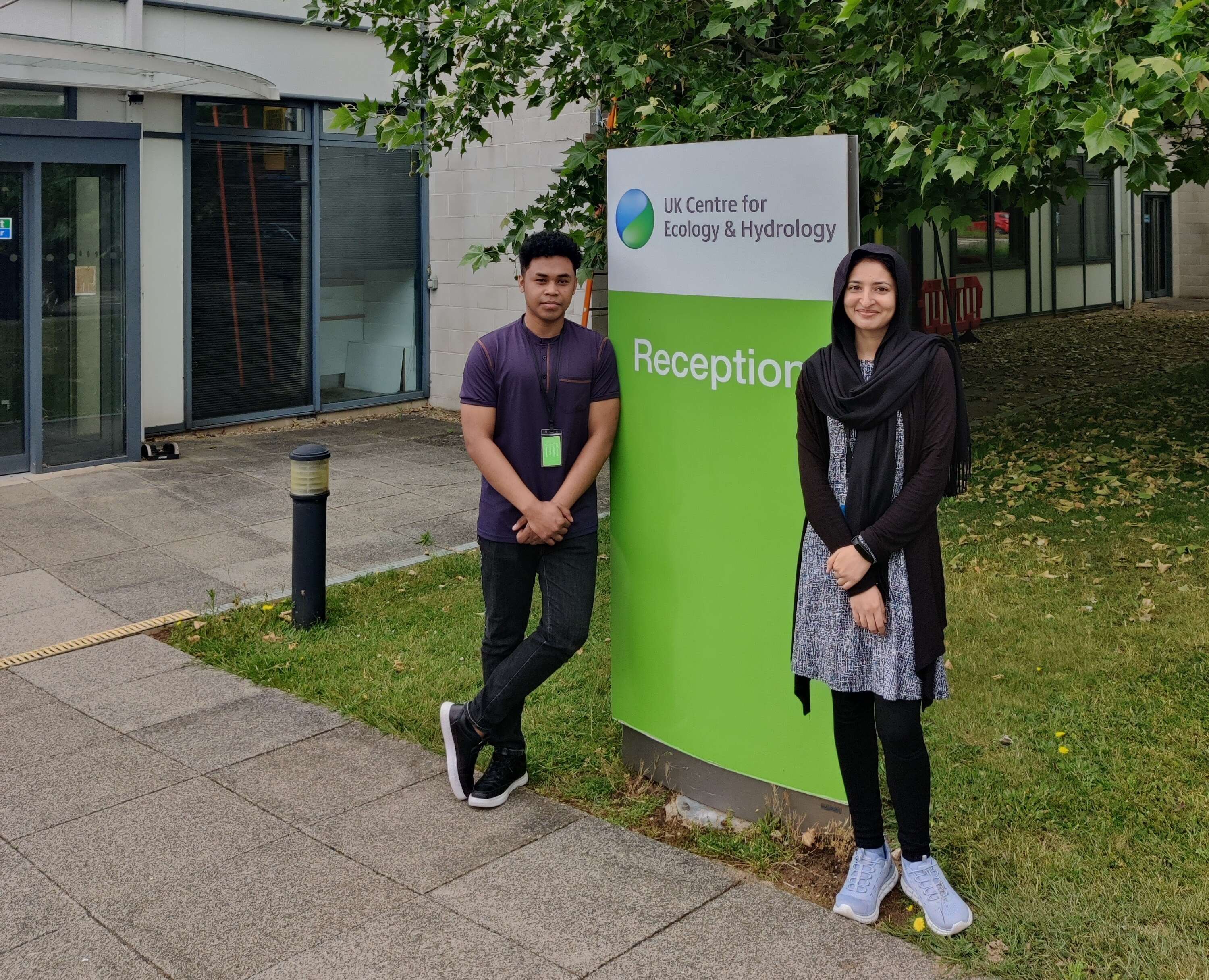Mendrika Rakotomanga, a PhD researcher at the University of Leeds, spent several weeks between May and July 2025 at UKCEH Wallingford, hosted by Jawaria Ahmed, furthering his work on AI-powered nowcasting for convective storm cores; areas within thunderstorms where the heaviest rainfall and strongest updrafts occur.
A strong partnership
Mendrika first became involved with UKCEH through the WISER-EWSA project, and has since collaborated with UKCEH colleagues on several NERC-funded projects related to convective processes and predictability. Mendrika has close connections with UKCEH – with two UKCEH staff as PhD supervisors (Seonaid Anderson and Connie Klein)! Despite this, until this visit, he had only spent a brief two-day visit to UKCEH, limiting opportunities for sharing knowledge.
Why collaboration matters
As part of his work on WISER-EWSA at Leeds, Mendrika developed a model for the short-term prediction of convective activity in Zambia. This model, called PanCast, predicts the movement of convective storm cores across Africa using cloud-top temperature data; predicting convective core locations at 1-, 3-, and 6-hour intervals. The concept for his visit to UKCEH was to compare this model with a model developed by Jawairia Ahmad at UKCEH for a similar purpose but based on a different machine learning technique. Both models performed well, outperforming older models and each other in different ways (for example picking up convective activity that the other model missed) demonstrating that there are continued gains to be made from this sort of collaborative model development.

During his time at UKCEH, Mendrika received support from researchers including to develop PanCast further and scale it from a regionally specific model to a pan-African model. This marks a significant increase in its potential utility. PanCast is also now hosted on the UKCEH Nowcasting Portal, where it is undergoing evaluation. The ultimate goal is to release it publicly and make it available as a tool for African met offices and researchers to use. Mendrika said: “I've learned a lot, because I've never deployed a fairly large model before! So when I came here, I asked Jawairia how to do it properly, and got best practice from everyone here.”
Looking ahead
The other significant advantage of Mendrika’s model, compared to older models, is that it is very lightweight. Once the model has been trained, it can be run on a laptop in a few minutes to generate predictions. This makes it accessible to developers who may not have consistent access to high-performance computing. The model is also highly scalable: As Mendrika said: “If the Zambian Met Office wants to develop their own version, let's say to focus on Zambia, they can still use the same approach and they can go very high resolution. Currently my resolution is 10 kilometres, but they can even go down until 3 kilometres if they wanted.”
Mendrika has also been active in community science outreach. In 2024, he helped organize the first (and very successful) storm nowcasting hackathon in Madagascar, attracting over 2,500 participants globally. He hopes to run another in future, building further capacity in African climate science and data science communities.
Reflecting on the visit, Mendrika emphasized the importance of in-person collaboration. “I think I could have made progress remotely,” he said, “but coming here meant getting best practices and insights that I wouldn’t have had otherwise.” He plans to continue refining his model and writing up results for his PhD, with future work exploring 24-hour forecasts and larger storm system patterns.
With growing links across Africa and with researchers at UKCEH and Leeds, Mendrika’s work is helping lay the foundations for a new era of fast, accessible, and locally relevant weather prediction tools — built in collaboration.